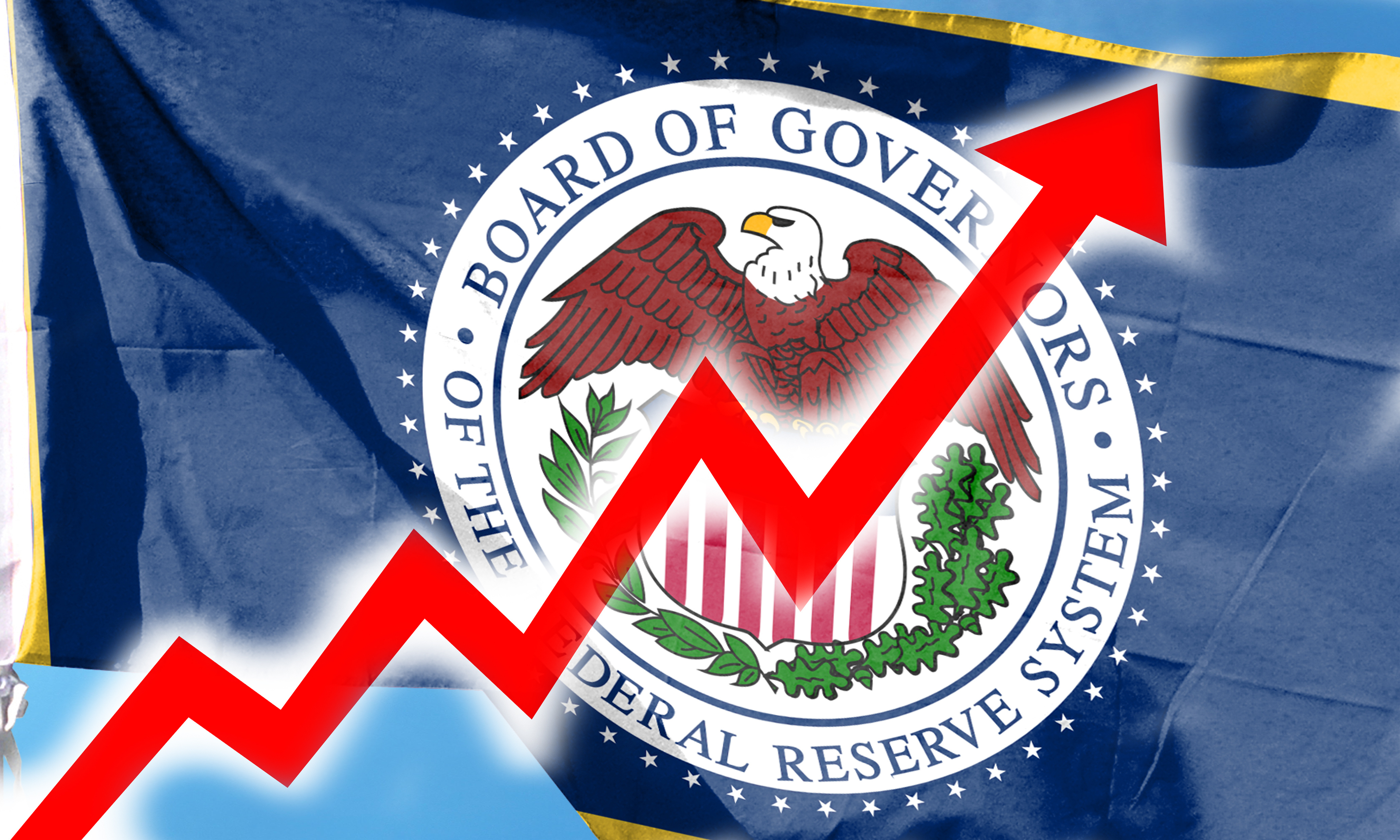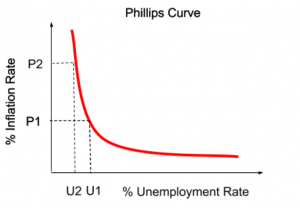The effect of monetary policy on the functional distribution of income
It was not too long ago, in the aftermath of the Great Financial crisis (GFC), that fears of deflation associated with worries about secular stagnation became an increasing concern of policy makers. However, since late 2021 and early 2022, inflation anxiety, resting on fears of a potential wage-price spiral that would sharply erode the purchasing power, especially of financial asset holders, has once again become the driving force behind current macroeconomic policy after a very long hiatus going back some four decades to the late 1970s and 1980s.
Subsequent to the initial implementation of strong fiscal stimulus packages adopted early during the COVID-19 crisis in 2020-2021, the heavy work of returning our COVID-battered economies to the pre-pandemic macroeconomic order associated with a 2 percent inflation target now rests primarily on central banks. As their response to inflation in the form of persistent interest rate hikes has come to dominate monetary policy actions both in the US and internationally, the Taylor rule has also returned as a significant policy concern with increasingly overt political pressure for its official (and not just its implicit) adoption at the US Fed, with much discussion over its relevance, particularly during the very recent inflationary surge.
The Taylor rule has become a policy hot potato in recent years, especially in this inflationary crisis, which its adoption, or its lack thereof, is being voiced loudly within policy circles, with targeted political accusations against the US Fed of being “behind the curve” in a partisan blame game of why central bankers have not sufficiently prevented inflation from taking hold during the pandemic. Some US Republican representatives have argued that the Fed had been given too much discretion in the pursuit of its current dual mandate cum its official 2 percent inflation target “add on” in 2012. As recently pointed out, these advocates are asking that actions of the Fed should be set on automatic pilot and bound by a formal interest rate rule like the Taylor equation. Others, such as former Fed chair Janet Yellen, have suggested a more traditional Keynesian interpretation of the Taylor rule by tilting the weights in the standard Taylor equation strongly in favor of closing the unemployment gap relative to the inflation gap.
In a new INET working paper, we analyze the consequences of an “inflation first” monetary policy on the functional distribution of income by adopting a post-Keynesian socioeconomic class analysis. We focus on how the post-1970s “inflation first” policy commitments of central banks came to be crystallized in the Taylor-rule scheme and how it consistently favored the income of rentiers (i.e., the savers/financial asset holders or net creditors within a community) at the expense of non-rentier groups (or net debtors).
The so-called Taylor rule was officially put forth as a possible framework to conduct monetary policy only in the early 1990s. Yet, it synthesized a set of ideas that became fashionable following the almost complete abandonment of the traditional Keynesian priorities of high employment and real output growth, which had dominated before the high inflation environment of the 1970s. Starting from the mid-1970s, associated with a series of major oil-price shocks, a policy consensus developed internationally that emphasized controlling inflation over all other possible macroeconomic goals. Hence, when monetarism “crashed and burned” in the 1980s, following the Volcker shock mythology, a New Keynesian cum Neo-Wicksellian view of macroeconomic policy emerged in response to demands for a new inflation policy anchor, as the latter slowly appeared within a precise monetary policy framework.
As is well known, by the 1990s all this opened the door to the Taylor rule approach to monetary policy formulation, which is normally described in the now standard Taylor rule formula:
i = ρ + π + α (π- π*) + β (q - q*) [1]
where i is the nominal central bank benchmark rate of interest, ρ is a constant term, which in real terms (i – π) (i.e., when (π- π*) = (q - q*) = 0) was interpreted as some constant “natural” or “neutral” rate of interest; α and β are policy coefficients, π and q are the actual inflation rate and real output respectively with π* being the target inflation and q* some sustainable “full capacity” level of output compatible with a Friedmanite “natural” rate of unemployment (u*) (or perhaps the so-called NAIRU). Given the presumed theoretical link between potential output and the natural rate of unemployment, one could easily restate the output gap as an unemployment rate gap (u* – u) and use it interchangeably as in equation [1’] below:
i = ρ + π + α (π- π*) + δ (u* - u) [1’]
The policy appeal of this central bank reaction function represented by equation [1] (or its alter ego [1’]) is important to highlight. The new policy framework fits unequivocally the pro-rentier “inflation first” priority that became politically anchored from the late 1970s onwards when central banks became obsessed with combating an inflation rate alleged by many to be spiraling out of control, as in the textbook accelerationist hypothesis popularized by Milton Friedman at the time.
In this context, the monetary policy focus was reduced operationally to getting the inflation rate under control, via the use of a single interest-rate instrument, the central bank-administered benchmark interest rate, i. This entailed the monitoring of basically two measures: the actual inflation rate vis-à-vis its target, and the output or unemployment gap. The monitoring of these two gaps was important because, within the Taylor equation, the output gap was never conceived within a reaction function as an independent argument to target by a central bank (as would a Keynesian policymaker). In contrast to the Keynesian perspective as understood within the US Fed’s dual mandate that envisaged the output or unemployment gap as an independent gap to close, in the Taylor framework it was solely an indicator upon which the central bank can react to combat future inflation preemptively when setting its benchmark interest rate, i. Hence, through the compounding effect arising from the setting of its operational interest-rate instrument, i, both “gaps” in the Taylor reaction function would be “informing” the monetary authorities of the measured distance from its single ultimate focus, namely the central bank inflation target to be reached both within the current time period and over time.
According to the specific logic of the Taylor rule reaction function, central banks were to raise the benchmark nominal rate and, by implication, the real rate, r = i – π, whenever the actual inflation rate inched up above its target and whenever the unemployment rate would be below its “natural” level from which these output gap measures were (often indirectly) derived. This view of the Taylor rule is quite different from what is sometimes referred to as the more Keynesian Yellen rule that interpreted the two policy gaps in equation [1’] as independent objectives in line with a more genuine dual mandate.
From a theoretical perspective, the Taylor relation is a key pillar of the New Keynesian/Neo-Wicksellian macroeconomics. As partly discussed in Seccareccia (1998), while being a lineal descendant of the general monetary theories put forth by Knut Wicksell over a century ago, the current Taylor rule framework differs from the original Wicksellian approach for at least four important reasons analyzed below, which as we shall see renders the Taylor framework somewhat problematic in its adoption.
Firstly, Wicksell had made it very clear that what central banks are actually doing is setting the money rate of interest, i, in relation to price changes within a certain period and not the real rate as in the Taylor rule reaction function. The real rate is merely the outcome of the setting of the money rate in relation to the inflation rate, which a central bank can perhaps try to predict, but, in reality, it can only know or measure it ex post. Secondly, Wicksell ignored the output gap or, at least, he thought that actual output was always tending towards potential output or full employment, thereby excluding the output gap from his reaction function; and, thirdly, for Knut Wicksell it can be said that the achievement of price stability meant that π* = 0 and not the usual 2 percent target of central banks nowadays. This latter concern is a somewhat minor distinction but, as we shall see below, it does imply a peculiar type of central bank reaction function.
Finally, and most importantly, unlike Taylor who can approximate econometrically his ρ value residually (i.e., ρ is the residual estimate when the two output gaps are constrained to zero values), Wicksell assumed that the “natural rate” rho is unobservable and, thus, cannot be known directly. It can only be understood from logical inference. What actually the central bank can do in responding to changes in prices is presumably to bring the “money rate”, i, closer to this unobservable “natural rate”, rho. Hence, one can merely presume that a central bank would know that i is getting closer to rho only ex post because it observes the rate of inflation/deflation slowing down and that rho = i when the rate of inflation/deflation has come to a halt.
Because of these differences in their theoretical structures, it has been argued elsewhere (see Seccareccia 1998, p. 186) that unlike the Taylor rule, the “Wicksell rule” could take the form of what we can describe as a mere nominal variant of the Taylor relation:
i = c + α’ (π- π*) + β’ (q - q*) [2]
Additionally, the Wicksell rule can be reduced to an even more elemental central bank reaction function when assuming, as did Wicksell, that π* = 0, and (q - q*) = 0, that is:
i = c + α’ (π) [2’]
where c is a constant term not to be confused with the unknown “natural rate”, rho, in Wicksell. Instead, α’ and β’ are coefficients as previously discussed vis-à-vis the Taylor equation. Furthermore, it can also be observed from equation [2’] that, depending on the value of the coefficient α’, the ex post real rate, c, can be a constant, or it can fluctuate counter-cyclically or pro-cyclically. Hence, depending on whether α’ = 1, we can describe this central bank response function as “proportional” (or “full”) adjustment to shocks to the inflation rate. On the other hand, we could describe the central bank response function as a “partial” adjustment when α’ < 1, and “over-proportional” adjustment of i to π when α’ > 1.
In contrast, because of the postulated pro-cyclicality of the adjustment of the real rate to π, the Taylor rule framework points to a distinct central bank rule of adjusting i to π, thus implying systematically an “over-proportional” adjustment of interest rates by the central bank, that is, a reaction function consistent with a value of α’ > 1 in equation [2’]. From our Wicksell and Taylor-rule reaction functions estimated in our INET working paper, we observe from our econometric estimation that there is a systematic “over-proportional” response behavior of central bank interest-rate policy toward changes in the inflation rate, on average, during the whole period of 1973-2022, in several industrialized countries. This thus implies empirically the de facto dominance of the so-called Taylor principle, which means a value of α’ > 1, for the entire period. Indeed, primarily before the GFC, money interest rates had been persistently over-adjusted by central banks to more than offset changes in the inflation rate, thereby reflecting an overzealous response function towards price inflation patterns and, at the same time, little or no concern over changes in unemployment rates. Despite this behavior of prioritizing inflation deviations that is compatible with both the Wicksell and Taylor rules, the apparent abandonment of unemployment or real output considerations is more consistent with a straight and unambiguous Wicksellian single-goal response function.
At the same time, we also find evidence suggesting a significant change in central bank behavior after the GFC, implying a reweighting of the policy parameters toward a more Keynesian-type reaction function that tries to balance for both changes in the inflation and the unemployment rates. This reweighting in the policy response parameters, however, does not mean that central banks had now switched to a Wicksellian “partial” adjustment or that they consistently violated the Taylor principle. It, instead, merely implied less over-compensation in real interest rate policy and a greater weight given to changes in the unemployment rate. Therefore, our findings would be adverse to the recent claims of some influential economists such as Bordo and Levy and BIS General Manager Agustín Carstens. These economists have been arguing that the policy of “too low for too long” interest rates and the systematic violation of the Taylor principle that prevailed in the several years prior to the COVID-19 inflationary surge, are part of the structural causes of high and sustained inflation and financial instability in the 2021-2023 late pandemic epoch.
Summing up, in our INET working paper we distinguish a regime of high rentier income shares during the 1980s all the way to the GFC, in line with a staunch “rentier first” monetary policy of responding aggressively to increases in the inflation rate. In parallel, we identify a regime of low rentier income shares during the oil-price shock era of the 1970s and then after the GFC when, in the latter case, the fears of deflation and secular stagnation came to prevail among many central bankers internationally, as reflected in the adoption of “flexible” inflation targeting (IT). During the post-GFC decade before the COVID-19 pandemic, this new “flexible” IT environment turned out to be more compatible with a genuine dual mandate policy framework, which rendered an overall income redistribution somewhat more in favor of non-rentier income groups in the economy.
We believe that, particularly in regards to a central-bank dual mandate, what has been occurring since the GFC in some industrialized countries is that a variant of the Taylor rule – due to the inclusion of a fairly independent output and unemployment objective, as in the so-called Yellen rule – can open the door to be interpreted in a Keynesian framework in which not only inflation and unemployment are interpreted as separate policy targets to pursue, but where fiscal policy can be coordinated with monetary policy ultimately to tackle two macroeconomic goals with two instruments.
Non-hyperlinked reference:
Seccareccia, M. (1998), “Wicksellian Norm, Central Bank Real Interest Rate Targeting and Macroeconomic Performance.” In The Political Economy of Central Banking, ed. by P. Arestis and M.C. Sawyer, Cheltenham, UK: Edward Elgar Publishing, pp. 180-98.





